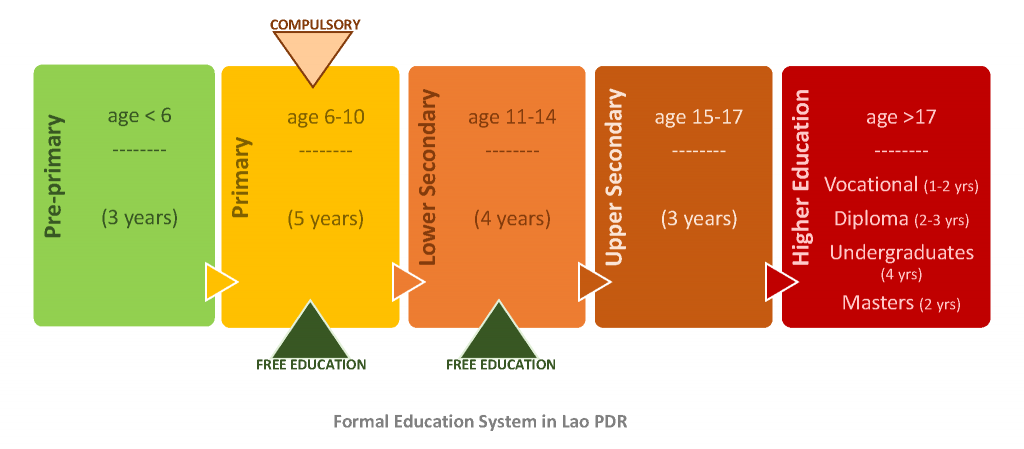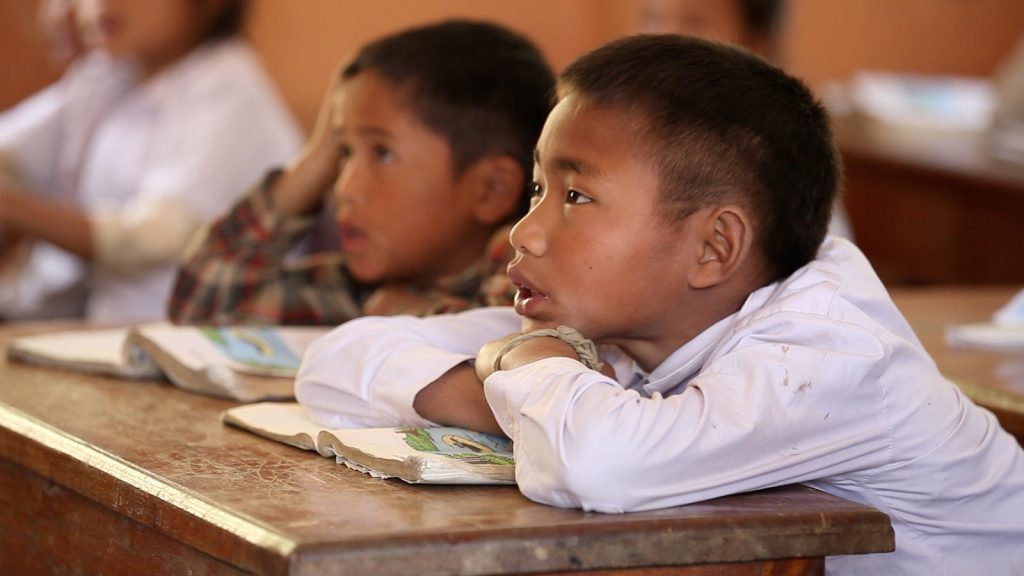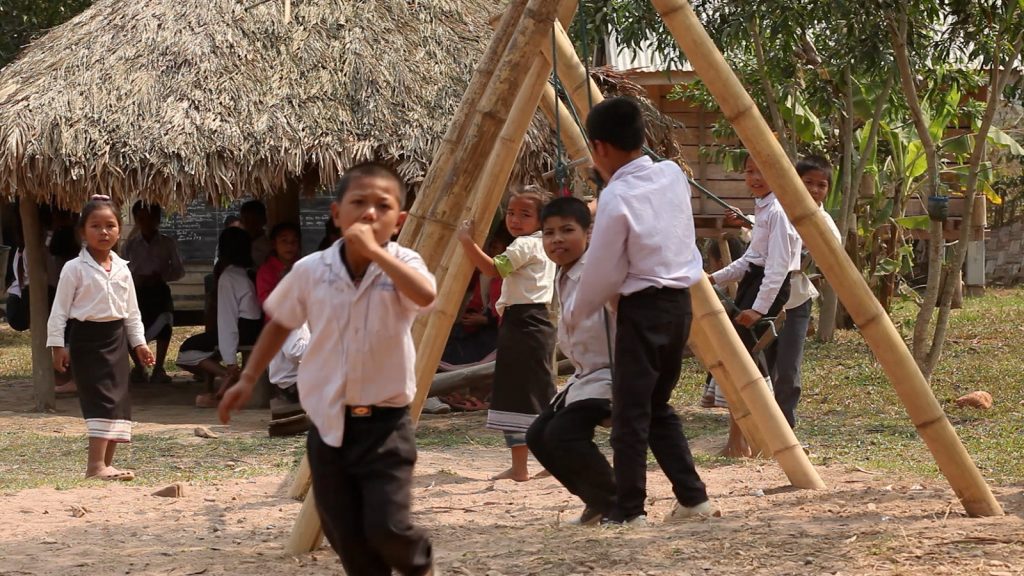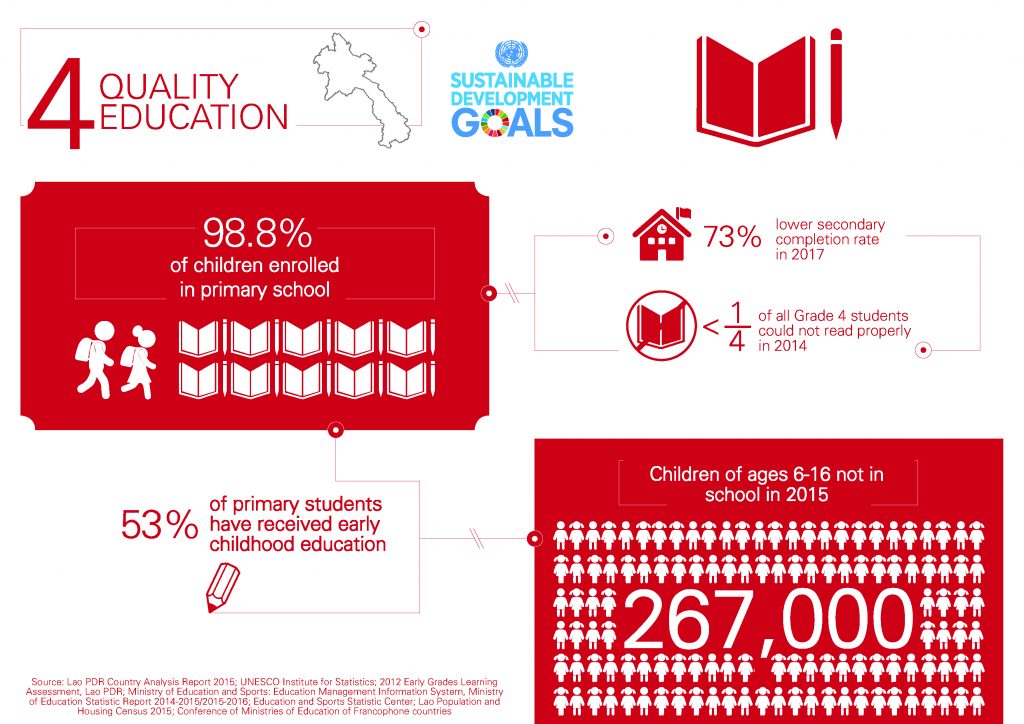Sustainable Development Goal 4 (SDG 4) – ‘Quality Education’ aims to “ensure inclusive and equitable quality education and promote lifelong learning opportunities for all”.1 SDG 4 includes 10 targets, with 11 measuring indicators. Targets 4.1, 4.5, 4.7 and 4.A involve free, equitable and quality primary and secondary education. Targets 4.2 and 4.5 aim to improve access to quality early childhood development, care and pre-primary education. Targets 4.3, 4.4, 4.5 and 4.7 focus on increasing skills for employment, decent jobs and entrepreneurship; Target 4.6 concentrates on universal literacy among youth. Target 4.B ensures the coverage of universal scholarships for higher levels of education in developing countries and regions and Target 4.C is to provide sufficient quality teachers at all education levels.2
From the Millennium Development Goals to SDG 4
The Millennium Development Goals (MDGs) are global development goals which were adopted in 2000, and set to be achieved by 2015, as a guide for development work for governments and development partners. The MDGs include 8 measurable targets, with the aim to eradicate extreme poverty and improve standards of living around the world. The MDGs focus on the development areas of education, gender equality, health, environment and global partnerships for development. At the end of the MDGs’ target implementation, Sustainable Development Goals (SDGs) were developed to build on the successes and challenges of MDGs. SDGs expand on the MDGs, which largely focused on social development, to cover all dimensions of sustainable development: economic, social and environmental. SDGs are current universal development goals that can be applied to all countries, regardless of their levels of development, towards sustainable development. SDG 4 is correspondingly a successor of MDG 2 ‘Achieve Universal Primary Education’, but SDG 4 has expanded to cover education at every level, instead of focusing mainly on primary education.3
As of 2015, Lao PDR had achieved the MDG target on school enrollment, attaining a 98.5% net enrollment rate in primary education. The primary survival rate improved from 48% in 1992 to 78% in 2014, but it still fell short of the target, 95% by 2015.4 By 2016, the primary net enrollment ratio had reached 98.8 percent, and the survival rate to grade 5 was about 81.1 per cent in 2017.5
By 2014/15, the gross enrollment ratio had improved to 78.1% for lower secondary school and 45.8% for upper secondary school, up from 62.9% and 33.4% in 2010/11 respectively.6 Gross school attendance/enrollment varies by geographic locality, mother’s education and wealth status. The distribution of teachers, along with their competencies and qualifications, is still a challenge, especially in remote areas.7 The number of enrollments in technical and vocational education has also increased over the past two years, but Lao PDR has struggled to supply skilled laborers to the market, mainly due to poor education quality.8

Adapted from: https://sites.google.com/site/hounsecondaryschool/about-us & https://www.slideshare.net/OECDLEED/session-v-tevt-for-disadvanted-group-in-laos
School attendance, survival and literacy rates are lowest among young people living in rural remote areas, those with uneducated mothers, and those living in the poorest households. School infrastructure is restricted in those remote areas; many primary schools are incomplete, while secondary schools are very distant between communities, making them more difficult to access. Many schools lack of standard facilities, such as water and sanitation. Teacher supply, particularly of qualified teachers, is limited in remote areas, where teachers often get less support and training. All of these factors have led to a shortage of skilled workers. While primary graduation is around 90%, lower secondary completion is only about 61% , and upper secondary is less than 40%.9 10 In addition, extreme natural disasters, like large-scale floods in 2018 and 2019, have decelerated the progress of the education sector, by damaging educational infrastructure and facilities, and delaying the start of the school year, which negatively impacted education investment.11
The low primary school survival rate, due to high repetition and dropout rates, can be justified by limited early childhood education in remote areas, incomplete schools, limited capacity of teachers, direct and opportunity costs of schooling for families, as well as insufficient funding to support investments in the quality of education.12

A primary school in Lao PDR, young boys at school. Photo credit: GPE/Stephan Bachenheimer, uploaded on January 17, 2015. License: CC BY-NC-ND 2.0.
SDG 4 Localization
Localized SDG 4 in the context of Lao PDR can be classified into 4 key outcome areas: (i) universal access, equitable and quality primary & secondary education (Targets 4.1, 4.5, 4.7 and 4.A); (ii) Improved access to quality early childhood development and pre-primary education (Targets 4.2 and 4.5); (iii) Increased skills for employment, decent jobs and entrepreneurship (Targets 4.3, 4.4, 4.5 and 4.7); and (iv) Universal literacy among youth (15-24 years) and adults (age 15 and above) (Target 4.6).13
The localization of SDGs has been mainly made by incorporating targets into the National Socio-economic Development Plan (NSEDP), and certain targets and indicators in the NSEDP monitoring and evaluation framework have been adapted to SDGs to support the implementation and monitoring of both programs.14
SDG 4 indicators have been integrated with the overall goal of the 8th NSEDP 2016-2020, specifically in Outcome 2, Output 3 – Universal Access to Quality Education. The overall plan focuses on reforming education systems to ensure equitable access to quality education, from early childhood education to vocational and university levels; and developing high-value human resources to meet the demands of socio-economic development and graduating the country from its least-developed status. Corresponding targets have been set to increase gross enrollment rates in primary and secondary schools; primary survival rates, and overall literacy rate; and to encourage the advancement to vocational and higher education.15

Playground in a primary school in Lao PDR. Photo credit: GPE/Stephan Bachenheimer, uploaded on January 16, 2015. License: CC BY-NC-ND 2.0.
SDG 4 Implementation
To strengthen the implementation of the 8th NSEDP 2016-2020 in education, together with SDG 4 targets, the Ministry of Education and Sports of Lao PDR has formulated the Education and Sports Development Plan (ESDP) 2016-2020 which outlines the goals, outcomes, policy and strategic directions, and required resources for 2016-2020. It has elaborated the objectives, targets, strategies and priority activities for each educational sub-sector towards the achievement of the overall goals. The overall purpose of the ESDP 2016-2020 is to improve early childhood education, primary education, lower secondary education, upper secondary education, non-formal education, teacher education, vocational education and training, higher education, education administration and training, and sports, with five policy objectives16:
- All learners are equipped with the foundation knowledge and skills needed, including adequate safeguards for their health, to either join the labour market or continue to post-basic education.
- Post-basic education is relevant to the requirement of Lao PDRs’ socioeconomic growth in each period, and that can be integrated into and compete with labour forces within ASEAN member countries is provided.
- Human Asset Index target for exit from LDC status is achieved with reduced disparity.
- The education sector is planned, financed and monitored to utilize resources effectively.
- Lao sport is gradually integrated to regional and international standards.
SDG 4 Monitoring
In Lao PDR, the SDG 4 indicators relating to education access, completion, gender parity and education infrastructure and facilities can be monitored through the Effective Education Management Information System (EMIS). While literacy and numeracy can be monitored by the population census, the Lao Labor Force Survey, and the Lao Social Indicator Survey (LSIS), information on technical and vocational education and training (TVET), as well as on higher education will need to be strengthened and linked to employment outcomes. Meanwhile, actual outcomes and quality of education services would also need to be assessed. Independent surveys need to be standardized to harmonize information, ensuring the monitoring of the SDG indicators.17
To strengthen the monitoring and review of SDGs’ implementation, Lao PDR developed its first Voluntary National Review (VNR) in 2018, in consultation with ministries, government agencies and local authorities, as well as development partners, civil society organizations and the private sector.18 In addition, Lao PDR conducted a mid-term review of the implementation of the 8th NSEDP (and its localized SDGs) in a Roundtable Meeting in 2018, which focused on reviewing the key outcomes of the NSEDP along with other cross-cutting issues on enforcement.19
References
- 1. United Nations. “Goal 4: Quality Education.” Accessed September 2019.
- 2. United Nations. “Sustainable Development Goal 4.” Accessed September 2019.
- 3. UN in the Lao PDR. “From Millennium Development Goals to Sustainable Development Goals: Laying the base for 2030.” (2017). Accessed September 2019.
- 4. The United Nations in Lao PDR. “2015 Progress Report: United Nations Development Assistance Framework in Lao PDR.” (2016). Accessed September 2019.
- 5. United Nations in Lao PDR. “Sustainable Development Goal 4: Quality Education [Lao PDR].” (2018). Accessed September 2019.
- 6. Ministry of Education and Sports. “Education and Sports Sector Development Plan (2016-2020).” (2015). Accessed August 2019.
- 7. The United Nations in the Lao PDR. “The Millennium Development Goals and Lessons Learnt for the Post-2015 Period: A Summary Review.” (2015). Accessed September 2019.
- 8. The United Nations in Lao PDR. “2015 Progress Report: United Nations Development Assistance Framework in Lao PDR.” (2016). Accessed September 2019.
- 9. UN in the Lao PDR. “From Millennium Development Goals to Sustainable Development Goals: Laying the base for 2030.” (2017). Accessed August 2019.
- 10. Ministry of Planning and Investment. “Third Draft for review Mid-Term Review of the Eighth National Socioeconomic Development Plan 2016—2020.” (2018). Accessed August 2019.
- 11. United Nations in Lao PDR. “Lao PDR – United Nations Partnership Framework 2017-2021 Progress Report 2018.” (2019). Accessed September 2019.
- 12. The United Nations in Lao PDR. “2015 Progress Report: United Nations Development Assistance Framework in Lao PDR.” (2016). Accessed September 2019.
- 13. The United Nations in Lao PDR. “Discussion Paper: The Sustainable Development Goals in the context of the Lao People’s Democratic Republic.” (2015). Accessed June 2019.
- 14. The United Nations in Lao PDR. “Tracking progress towards National Development Goals and Sustainable Development Goals.” (2017). Accessed August 2019.
- 15. Ministry of Planning and Investment. “8th Five-Year National Socio-Economic Development Plan (2016-2020).” (2016). Accessed August 2019.
- 16. Ministry of Planning and Investment. “Third Draft for review Mid-Term Review of the Eighth National Socioeconomic Development Plan 2016—2020.” (2018). Accessed August 2019.
- 17. UN in the Lao PDR. “From Millennium Development Goals to Sustainable Development Goals: Laying the base for 2030.” (2017). Accessed August 2019.
- 18. Government of the Lao PDR. “Lao PDR Voluntary National Review on the Implementation of the 2030 Agenda for Sustainable Development.” (2018). Accessed August 2019.
- 19. Ministry of Planning and Investment. “Third Draft for review Mid-Term Review of the Eighth National Socioeconomic Development Plan 2016—2020.” (2018). Accessed August 2019.


